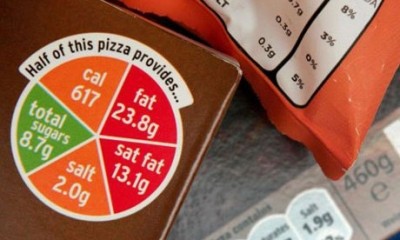Eye tracking research could lead to better nutritional labels

Research utilising eye tracking technologies for the assessment of health and nutrition labelling information is still in its early stages, yet scientists say consistent 'themes' that could help enhance label understanding are already emerging.
Writing in Food Policy, an international team of scientists reviewed the totality of the peer-reviewed research using eye-tracking methodology to assess consumer attention to nutrition labels.
Led by Dan Graham from the University of Minnesota, USA – along with colleagues from Aarhus University, Denmark and ETH Zurich, Switzerland – the team notes that several labelling characteristics “make it more difficult than necessary for consumers to locate and comprehend nutrition information.”
“Even consumers motivated to select healthful foods are sometimes unsuccessful in accurately assessing food healthfulness due to barriers in comprehending nutrition information,” said Graham and his colleagues.
Recent eye-tracking studies have revealed several barriers that affect the way in which consumers understand nutrition information presented on a food product, they said.
“Label location, size, color, and format can all influence whether the label is viewed by a consumer, and how readily it is understood."
However, the degree to which such characteristics act to impede consumer understanding of nutrition information depends upon the presentation format of the nutrition label, say the reviewers. “Thus, label formatting represents an important opportunity for improving consumer ability to acquire and comprehend nutrition information.”
Study details
The reviewers noted that research has shown consumers spend over 30% more time viewing nutrition labels located in the center, compared with the sides, of a visual plane.
“In addition to location of the label, location on the label also relates to consumer viewing of nutrition information,” they said – noting that nutrients located nearer to the top of the label receive more visual attention from consumers.
“Although an individual may report that a nutrient near the top of a nutrition label is equally important to view as another nutrient near the bottom of the label, she is actually more likely to view the nutrient at the top of the label.”
“Thus, modifying both the location of the label itself and the locations of nutrients on the label could lead to consumers spending more time viewing the most health-relevant nutrients.”
In addition, they said that nutrition label use could be improved in at least one way that does not impact the label at all. Visual ‘clutter’ surrounding the nutrition label can lower attention to nutrition labels, they argued.
“Thus, reducing the number of total features found on food packaging could increase consumer attention to the nutrition label independent of any changes to the label itself,” they said.
They researchers said that current research suggests the following label characteristics can enhance consumer’s ability to use labels effectively:
- Labels positioned centrally
- Nutrients positioned according to health relevance
- Visual clutter surrounding nutrition labels reduced
- Visual salience of nutrition labels increased (e.g., using contrast and/or orientation)
- Surface size of nutrition labels increased
- Simplifying the health messages
Source: Food Policy
Volume 37, Issue 4, Pages 378–382, doi: 10.1016/j.foodpol.2012.03.004
“Eye tracking and nutrition label use: A review of the literature and recommendations for label enhancement”
Authors: D.J. Graham, J.L. Orquin, V.H.M. Visschers
















